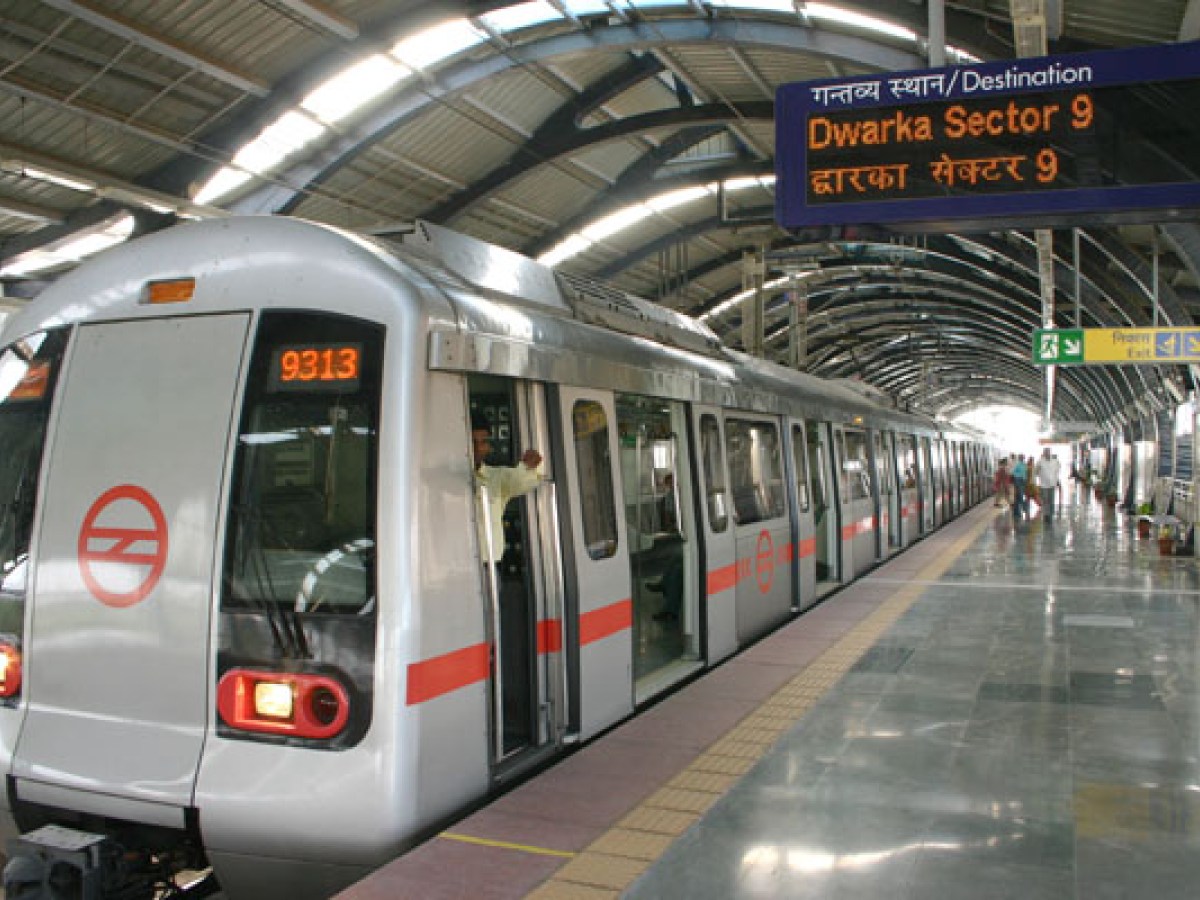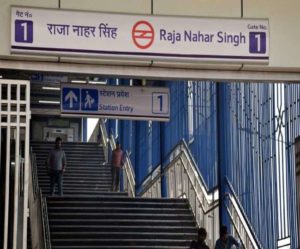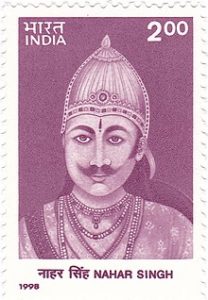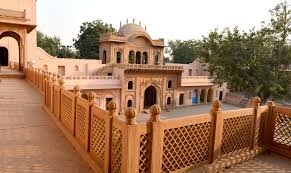How Raja Nahar Singh Metro Station got its name?

Formerly known as Ballabhgarh Metro Station, Raja Nahar Singh Metro Station is the terminating station on the Violet Line of the Delhi Metro. The station is named after martyr Raja Nahar Singh.
A Jat king of the princely state of Ballabhgarh in Faridabad district of Haryana, the forefathers Raja Nahar Singh (1823-1858) were Jats from Tewatia gotra who had built a fort in Faridabad around 1739. He was involved in the First War of Indian Independence in 1857. The small kingdom of Ballabhgarh is around 20 miles from Delhi. The palace is now with the government of Haryana under Haryana Tourism.
Balram Singh Tewatia, the brother-in-law of Maharaja Suraj Mal Sinsinwar of Bharatpur state, was the first ruler of Ballabhgarh State. Nahar Singh, his descendant, was born to Raja Ram Singh and Rani Basant Kaur at Ballabhgarh on April 6, 1821. When he was about nine, his father died. He was brought up by his uncle Nawal Singh who took over the responsibility of running the state affairs. Nahar Singh was crowned in 1839.
He was an able and secular ruler who promoted communal harmony. Nahar Singh gifted four villages to his Muslim court musician Umra Khan of Delhi gharana, a gift that included “the village of melody”, Samaypur which is, at present, a locality of Ballabhgarh town.
In 1857, under the “Delhi Agency”, there were seven princely states — Jhajjar, Farrukhnagar, Ballabhgarh, Loharu, Pataudi and Dujana. The chiefs of the last two estates remained loyal to the British but others did not. The Rajput rulers of Rajasthan chose to stay out. The British forces met with tough resistance when Nahar Singh halted the British on the doorstep of the Capital. Nahar refused to extend any help to District Collector William Ford who was collecting forces to curb this movement. Nahar actively recruited sepoys of the native infantry or cavalry, who revolted against the British, in services of his Ballabhgarh forces with enhanced pay and promotional ranks.
To fortify his armed strength, the Raja not only raised new levies but collected as much as possible latest weaponry and other war material as was revealed from the recovery of large number of horses, bullocks, carts, English rifles and dresses from his fort after the British assaulted it.
He revolted against the British rule, and joined the forces led by Emperor Bahadur Shah. In a letters to Bahadur Shah Zafar dated May 22 and May 25, 1857, Raja Nahar Singh wrote that he had secured the road from Delhi Gate (Delhi) to Bhadrapur (Bharatpur) as well as drove the British away from the parganas of Pali (Rajasthan), Palwal and Fatehpur. Nahar Singh supported the revolutionary government and faithfully obeyed the instructions issued to him in connection with the maintenance of peace and order, recruitment of forces and collection of funds for the War.
Nahar Singh was 32 when he threw his small army into the fray against the British in 1857. Refusing an offer to save himself by acknowledging British supremacy, he was hung in Chandni Chowk in January 1858 and his estate was forfeited. He was charged by the colonial rulers for assisting rebellion with money, provisions and arms and by sending troops to Palwal, for taking it from the British Government in India.





